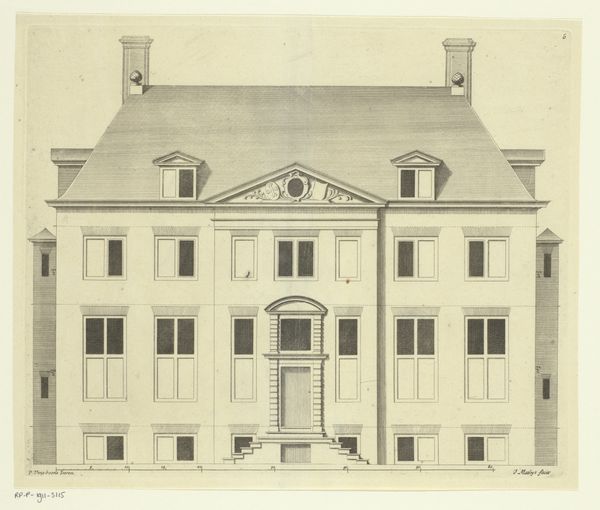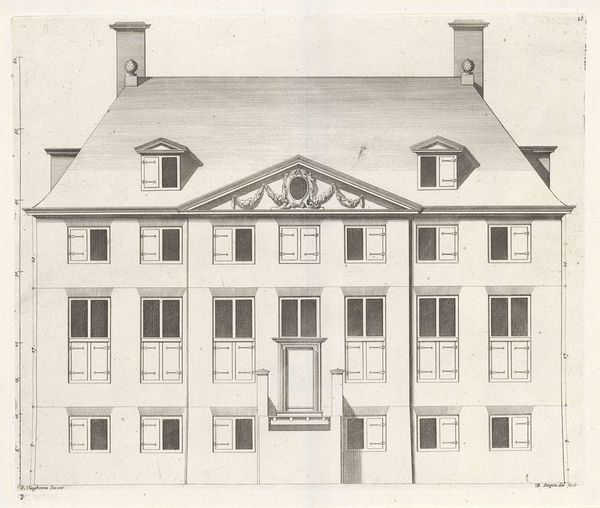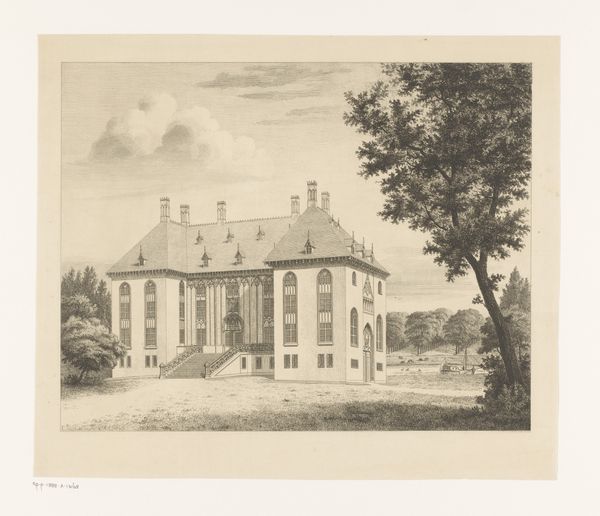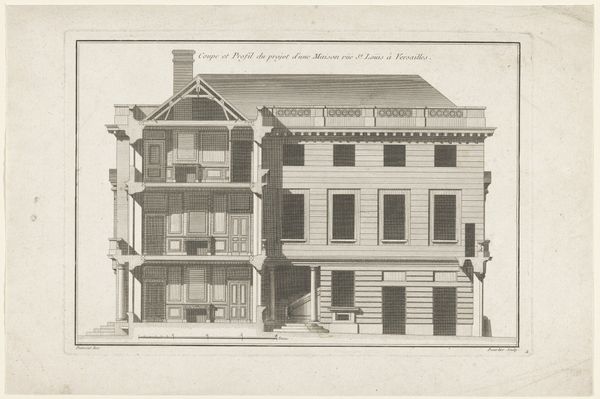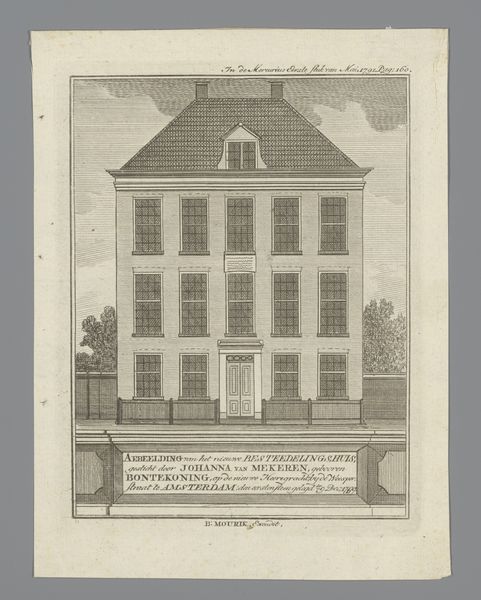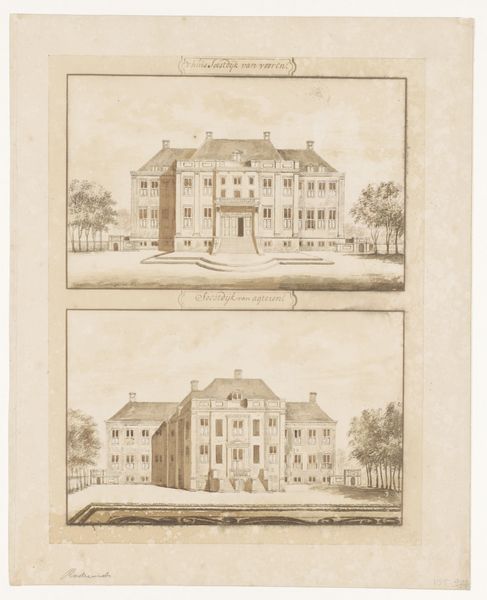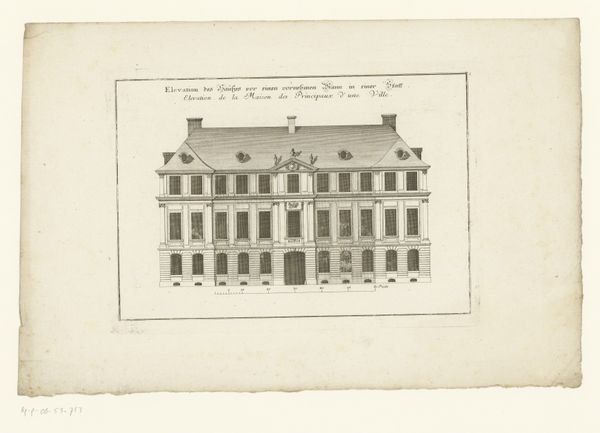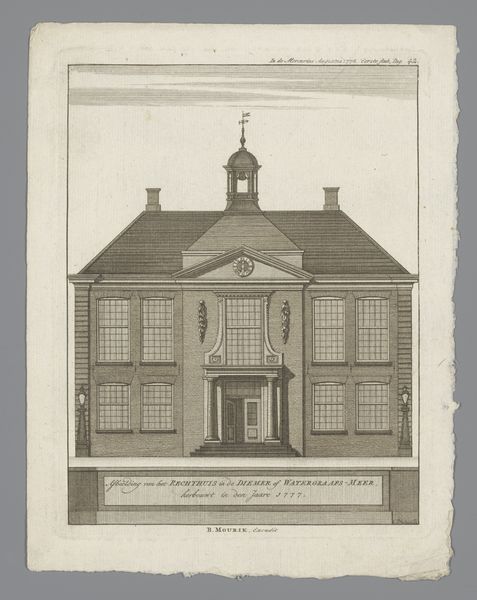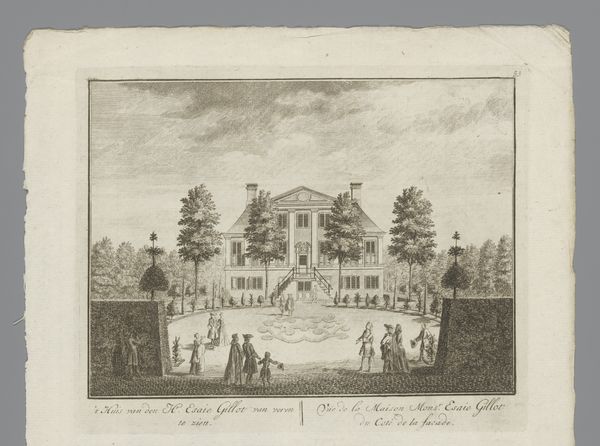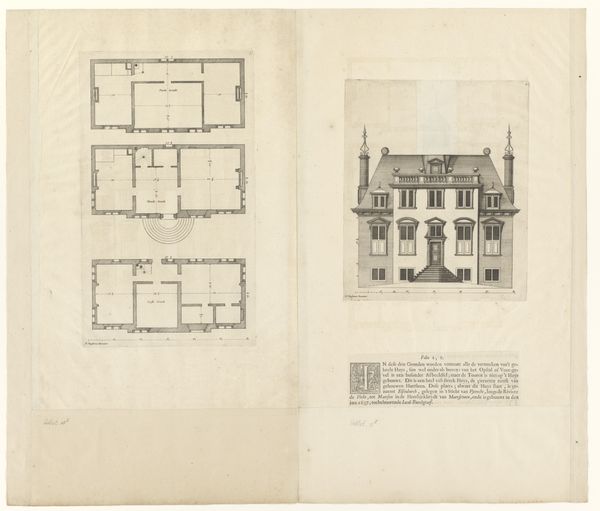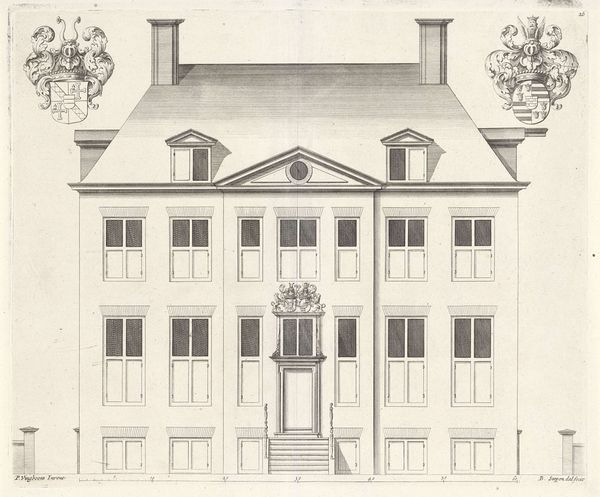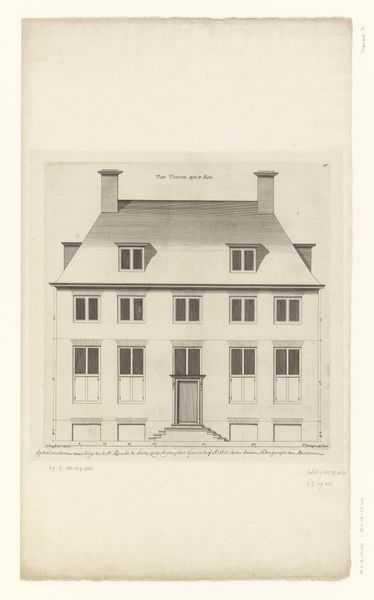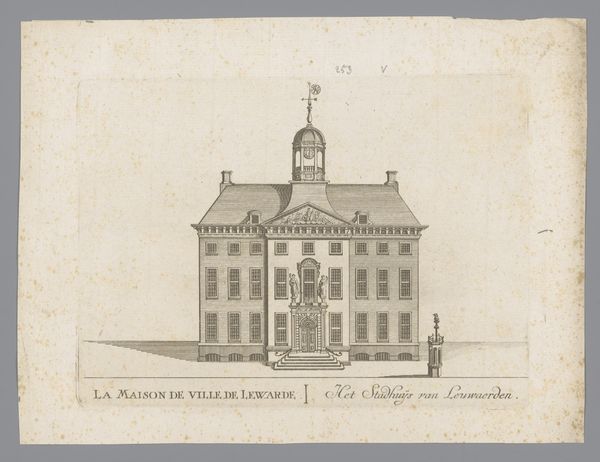
print, engraving, architecture
#
baroque
# print
#
landscape
#
form
#
line
#
engraving
#
architecture
Dimensions: height 299 mm, width 340 mm
Copyright: Rijks Museum: Open Domain
Curator: Here we have "Gevel van het landhuis Pijnenburg te Soest" a 1648 engraving by Johannes Vinckboons. What are your first impressions? Editor: It strikes me as serene and meticulously ordered. The facade, rendered in precise detail, has a calming symmetry and restrained elegance, particularly for a Baroque-era depiction. The balance achieved through the structure is immediately pleasing. Curator: Indeed, but it's more than just aesthetics, isn't it? Vinckboons’ print offers insight into the social status and material aspirations of the Dutch elite during the Golden Age. The engraving itself becomes a commodity, circulated amongst potential buyers. Editor: That is fascinating. I'm compelled by the geometric clarity, though, the rhythmic repetition of windows and the linear perspective. Even in print, the formal architectural structure seems imposing, almost idealized. Curator: Consider the function of this image. It serves as both an advertisement and an architectural document. The act of engraving itself—the labor involved, the choices in linework—these things emphasize a controlled, cultivated environment indicative of wealth and the rise of merchant power in the Netherlands. Editor: I notice the artist used delicate line work to create a convincing illusion of depth, guiding our eye upwards, appreciating its symmetry and elegant proportions of windows and facade. It is an ode to manmade design and a sense of established order. Curator: It is worth contemplating the availability of these materials and the societal structures necessary for this type of architecture to thrive. The Dutch Republic in 1648 was consolidating wealth and power via international trade. A print like this reveals those ambitions and processes. Editor: True, but it still manages to appeal to the innate human appreciation for order and elegance, a delicate negotiation between form and content. Curator: Absolutely, it merges the practicality of property and design with the aesthetic language of Baroque ambition. It's both informative and persuasive in its portrayal of Pijnenburg. Editor: I concede it provides not only visual appeal, but a lens through which to better examine Dutch society at a critical stage. Thank you for elucidating Vinckboon’s technique within its fascinating context.
Comments
No comments
Be the first to comment and join the conversation on the ultimate creative platform.
